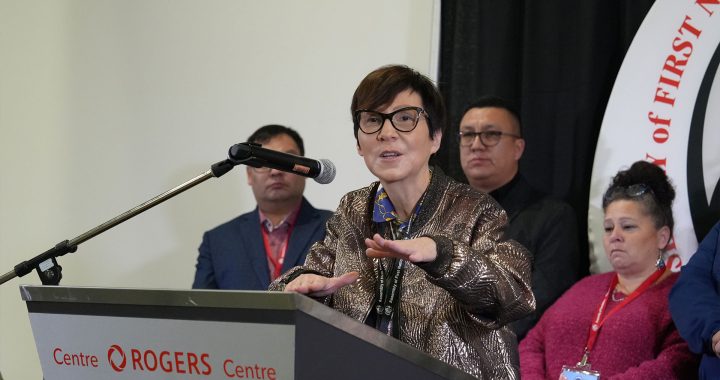Warning: This story may be triggering for some people.
A collection meant to represent MMIWG2S, created by Anishinaabe Mohawk fashion designer Lesley Hampton has sparked outrage on social media.
Hampton’s work was showcased at Toronto Fashion Week in 2019.
But photos posted this week of Ashley Callingbull wearing one of the dresses from the collection has gotten a lot of compliments but has also triggered many families of missing and murdered Indigenous women.
“I’ve been re-traumatized; it brings back all the memories,” said Deborah Green, whose sister was murdered in Calgary in 1982.
She calls the dress offensive and sexualized.
The image shows Callingbull wearing a seemingly transparent dress covered in red dots, which Green says looks similar to blood.
“I know that a lot of families that have reached out to me have been triggered,” she said. “Some of their families passed by blunt-forced traumas and very violent deaths where it symbolized blood for them and they were traumatized by that image.”
Hampton said the dots represent each stolen sister and families that have been affected.
“We wanted each dot, the vast majority of dots to show the vast statistics of how many people, how many Indigenous women we lost,” Hampton said.
“It was that kind of visual representation to show the mainstream viewers how big of an issue this is and how much we have to bring it to the forefront and fight it.”
Another comment on the photo read, “Keep wearing stuff like that you’ll go missing lol jk”

“I think it sparked the conversation around victim blaming,” said Hampton.
“How putting blame on the individual for based on what they’re wearing and what happened to them and I think it’s really disgusting for that person to say that and it shows just the amount of work that needs to be done.”
Callingbull said there is “no way” that the photos are sexualized.
“I have family members and friends that haven’t come home,” Callingbull said in an interview with APTN News.
“So, to see a dress done in a way where it can be seen in mainstream media and it looks beautiful. But the truth behind it is that it’s not. It’s scary, the stats. It’s the scary truth that we live in.”
She took to Facebook to apologize.
“This post didn’t mean to be hurtful or offend anyone. This was for a campaign that an indigenous designer created for the MMIW movement.”
Green said she would have liked to see more families of the missing and murdered involved in the design process.
“I feel that those designers that want to use MMIW as a platform to further their own success,” she said. “If you are a true an advocate and truly a supportive MMIW we should see you everywhere. We should see you at the government, we should see you in policing rallies, we should see you everywhere involved.”
Hampton said she didn’t grow up with her culture due to the 60s scoop and uses her designs to re-connect with her community and empower Indigenous People.
“The Indigenous fashion community is my way into learning about my Indigeneity and learning about who I am as an individual. I apologize so much if my work affected anybody in a negative way and it’s really just my exploration into myself and how I can continue to better develop work in the future.”










